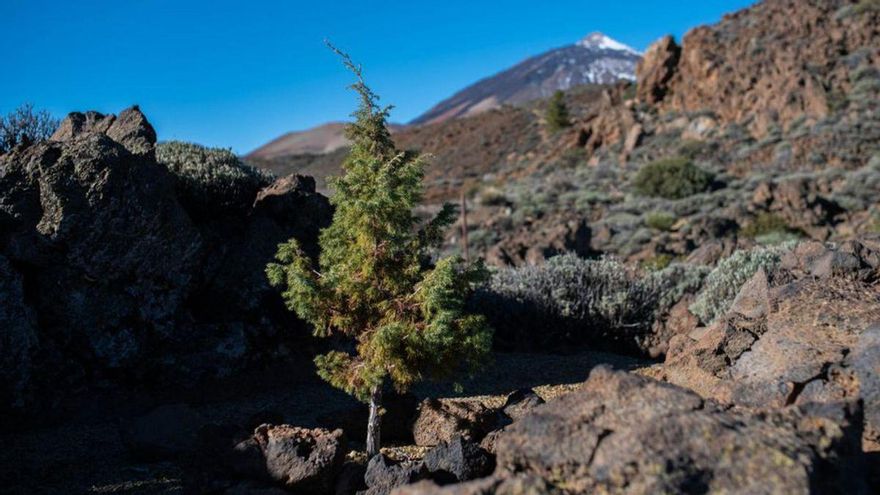
Unique flora and fauna, such as cedars that are over a millennium old, plus geological, cultural, historical or ethnographic values, make Teide a symbol. Saint and password of Tenerife to protect
Couplets, paintings, poems or images like the one on the old 1,000 pesetas bill. in everything is present the Teide as a symbol, saint and sign of Tenerife. The giant volcano has magic, a unique spell in which it is enough to open your eyes and admire the gift of nature to the Island. Imposing in its 3,718 meters –more or less– high, only the more than 200 species of flora and fauna who live there already make Las Cañadas National Park a unique space. If geological, ethnographic, anthropological, cultural and even technological values are added to this, the whole is a unique environment.
A landscape to be enjoyed by locals and strangers, but also to be protected. A giant in the middle of a natural paradise that captures the attention of millions of visitors each year and focuses scientific concern for its conservation.
A recent example, beyond the broom, the tajinastes or the blue chaffinch. At the end of March, a study was published that identified a Canarian cedar –Juniperus cedrus– as the oldest tree in Europe. It is located on Mount Teide and its age is 1,481 years. In 2019, another specimen, the Patriarch, had already been discovered, at 1,118 years old, according to carbon 14 tests. In both cases, the participation of the biologist and curator José Luis Esquivel was key.
The experts do not want to reveal where exactly the cedars are to preserve them from the human footprint that can negatively affect them. Instinct of conservation and protection.
Teide is a natural heritage that has an exclusive community of living beings, adapted to extreme conditions. The Teide violet, pollinating insects or invertebrates such as the three endemic species of lizard.
A unique landscape in the world from the perspective of volcanism and as a geological reservoir, trace of the evolution of thousands of years. In the meteorological aspect with the Izaña Observatory as a flag. A treasure in the climatic field as demonstrated by the most recent botanical study. researchers of the ULL conclude that climate change “puts the botanical species of the peaks of Tenerife at risk of disappearance”, read the Teide. Without forgetting the scientific value. For example, in astrology as a privileged observatory of the universe.
The Teide National Park is part of the island’s history. A sacred place for the Guanches, who used to go up in summer with their herds to trace centuries-old routes of transhumance or ravines.
All this and much more in just 200 kilometers (18,990 hectares) of surface. They are the jewels of Teide. To preserve and protect.
















